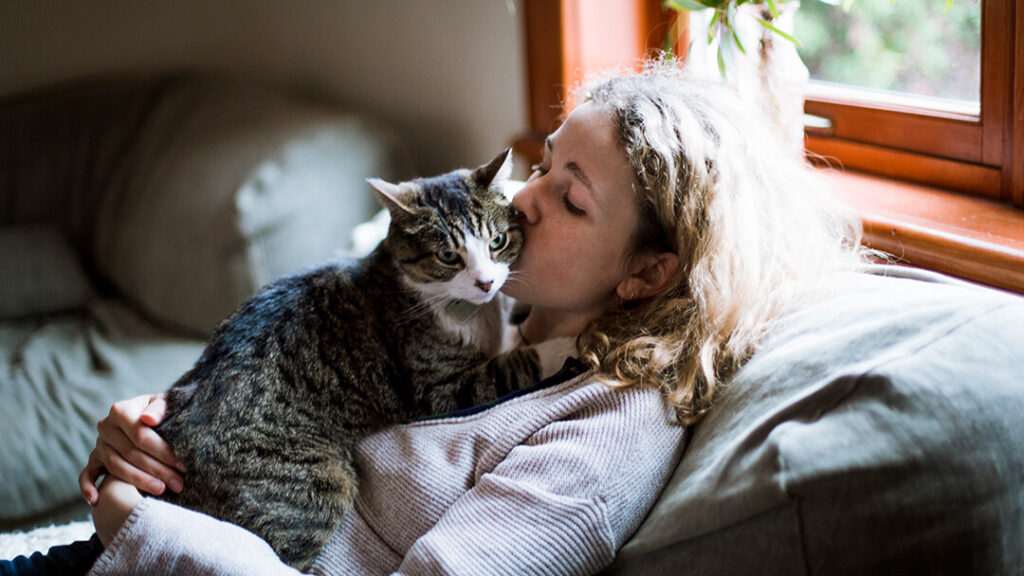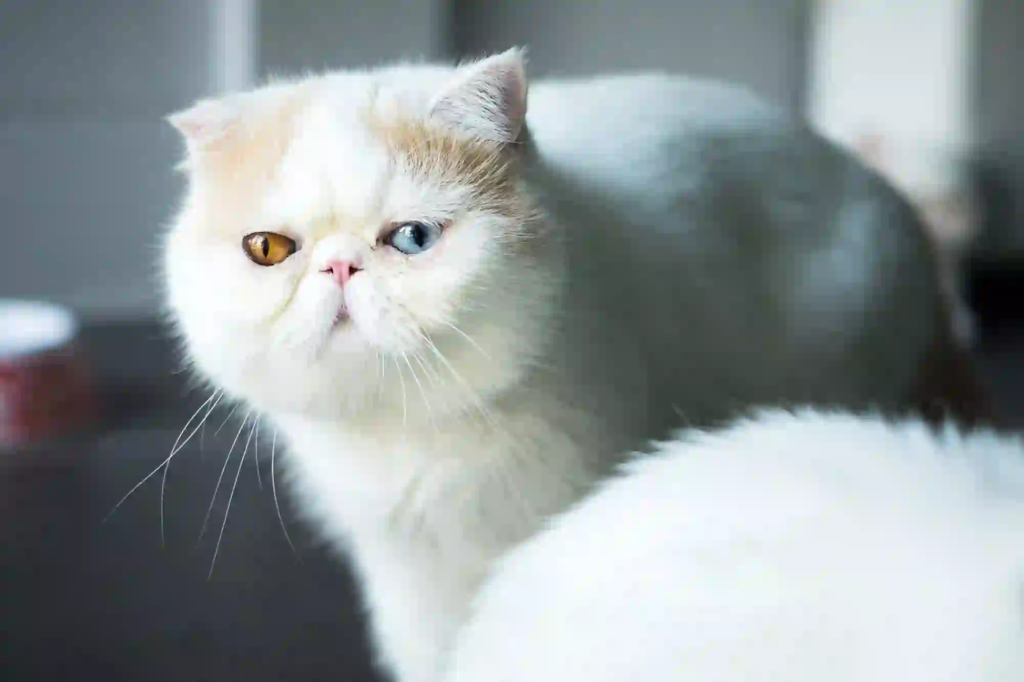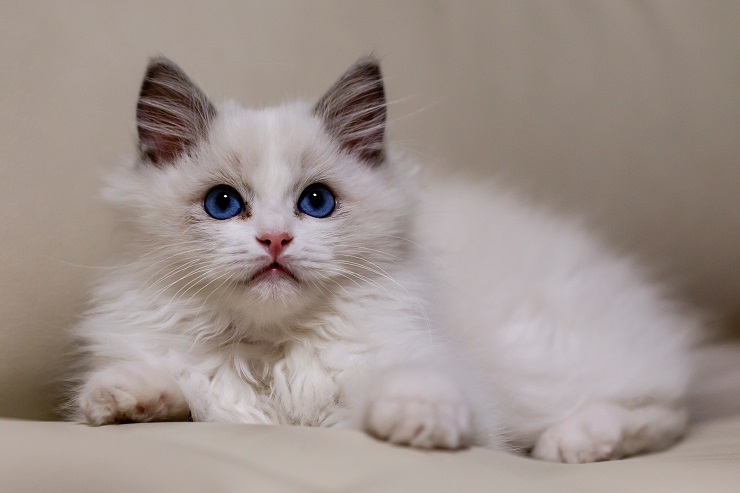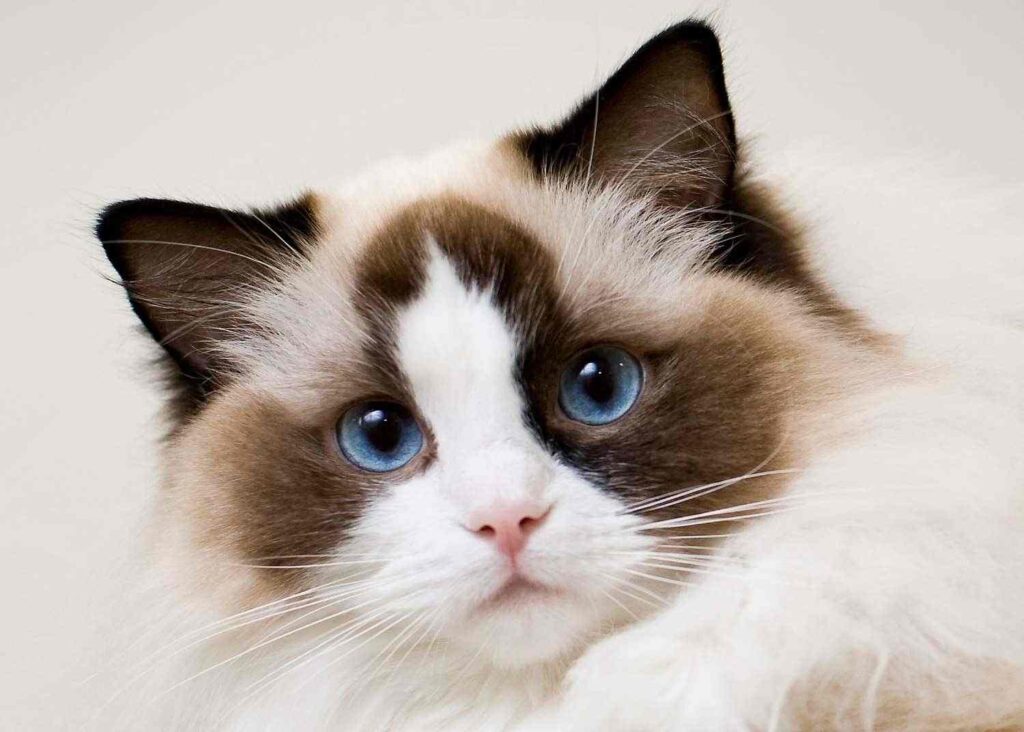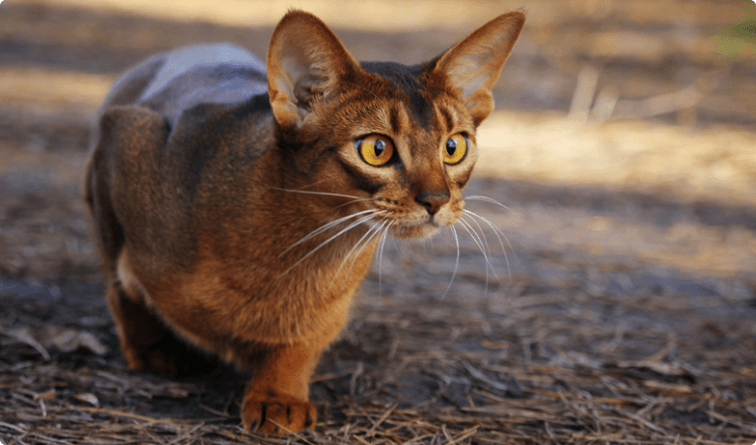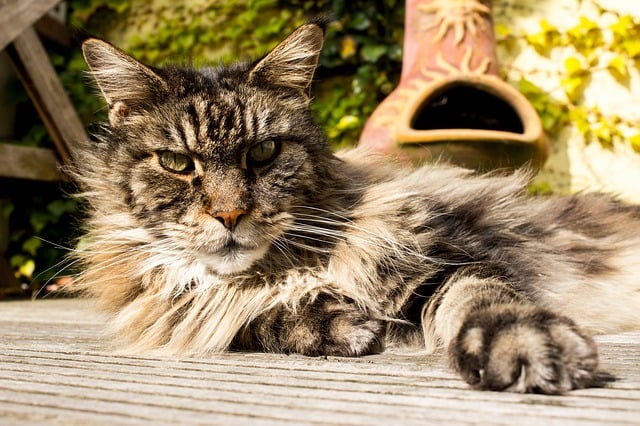Are you a cat lover looking for something out of the ordinary? Do you want a feline companion that will make heads turn and jaws drop? Then, look no further than exotic cat breeds! These unique cats are unlike any other, with striking features and personalities that set them apart from the rest.
Exotic cat breeds are defined as those that are not commonly found in households or major cat registries. They come from all corners of the world and have distinct physical attributes, such as unusual coat patterns or eye colors. Some examples include the Korat from Thailand, the Bengal from India, and the Sphynx from Canada.
Despite their rarity, exotic cats have gained popularity among pet owners in recent years. People are drawn to their beauty and individuality, as well as their affectionate and playful nature. The International Cat Association recognizes several exotic cat breeds and encourages responsible breeding practices to ensure their health and well-being.
So, if you’re ready to add some spice to your life with an exotic feline friend, keep reading! Get ready for a wild ride!
Characteristics and Traits of Exotic Cat Breeds
Unique Physical Features of Exotic Cat Breeds
Exotic cat breeds are known for their unique physical features that set them apart from other domestic cats. These features include:
Facial Features: Many exotic cat breeds have distinctive facial features, such as the flat faces of Persians or the large ears of the Sphynx. These facial features not only give these cats a unique appearance but can also affect their health. For example, flat-faced cats may be prone to breathing problems, while Sphynx cats may need extra care to protect their sensitive skin.
Coat Patterns: Exotic cat breeds often have unusual coat patterns that make them stand out. For example, the Bengal cat has a coat pattern that resembles that of a wild leopard, while the Siamese cat has distinctive “points” on its face, paws, and tail. These coat patterns not only make these cats visually striking but can also reveal important information about their genetics and health.
Body Types: Exotic cat breeds come in many different body types, from the long and lean Oriental Shorthair to the stocky and muscular Scottish Fold. Each body type has its unique characteristics and traits that can affect everything from a cat’s personality to its health.
Behavioral Traits of Exotic Cat Breeds
In addition to their physical features, exotic cat breeds also have unique behavioral traits that set them apart from other domestic cats. Some common behavioral traits among exotic cat breeds include:
Personality: Exotic cat breeds often have distinct personalities that reflect their breed’s history and breeding. For example, Persian cats are known for being calm and affectionate, while Bengal cats are energetic and playful. Understanding your exotic cat’s personality is key to providing it with proper care and attention.
Energy Level: Many exotic cat breeds are highly active and require plenty of exercise and playtime to stay healthy and happy. For example, the Savannah cat is a cross between a wild African serval and a domestic cat, making it highly energetic and in need of lots of stimulation.
Intelligence: Exotic cat breeds are often highly intelligent and can be trained to perform tricks or even walk on a leash. For example, the Siamese cat is known for its intelligence and vocal nature, making it an excellent choice for owners who want an interactive pet.
Top 5 Most Exotic Cat Breeds in the World
The Most Expensive Cat Breed: Savannah Cat
The Savannah cat is a hybrid breed that was created by breeding an African Serval with a domestic cat. This exotic breed is known for its wild appearance, as it has spots and stripes like a wildcat. They are also one of the most expensive cat breeds, with prices ranging from $4,000 to $20,000.
Savannah cats are intelligent and active cats that require plenty of exercise and stimulation. They are also social creatures that enjoy interacting with their owners and other pets. These cats can be trained to walk on a leash and even play fetch.
The Most Colorful Cat Breed: Bengal Cat
Bengal cats are another exotic breed that was created by breeding an Asian Leopard cat with a domestic cat. These cats have striking markings that resemble those of their wild ancestors. Bengal cats come in many different colors and patterns, including brown tabby, silver tabby, snow leopard, and black.
These cats have a lot of energy and love to play. They are also highly intelligent and can be taught tricks like opening doors or turning off lights. Bengals are very social animals that form strong bonds with their owners.
The Most Mysterious Cat Breed: Egyptian Mau
The Egyptian Mau is one of the oldest domesticated cat breeds in the world. These mysterious-looking cats have distinctive spots on their fur, which give them an almost leopard-like appearance. They are also known for their large ears and green eyes.
Egyptian Maus are loyal companions that form strong bonds with their owners. They are playful and energetic but can also be quite shy around strangers. These cats make great indoor pets as they don’t require much exercise or outdoor space.
The Most Elegant Cat Breed: Siamese Cat
Siamese cats are one of the most recognizable breeds in the world. These elegant cats have striking blue eyes and a distinctive coat that is usually cream-colored with dark points on the face, ears, legs, and tail. They are also known for their talkative nature and will often meow to communicate with their owners.
Siamese cats are intelligent and playful animals that require plenty of attention and stimulation. They are also very social creatures that enjoy interacting with their owners and other pets.
The Most Fluffy Cat Breed: Persian Cat
Persian cats are one of the most popular cat breeds in the world. These fluffy cats have long hair that requires regular grooming to keep it healthy and tangle-free. They come in many different colors, including white, black, blue, red, cream, and silver.
Persians are gentle creatures that make great indoor pets. They are affectionate animals that love nothing more than cuddling up on your lap for a nap. These cats can be quite lazy at times but also enjoy playing with toys or chasing laser pointers.
The Wild-Looking Breeds: Cats That Look Like Tigers, Leopards, and Bobcats
Wild Cat Resembling Breeds
Cats have always been a favorite among animal lovers. They are cute, and cuddly, and make for great pets. However, some cat lovers want something more than just a regular house cat. They crave a feline that has a little bit of wild side to it. This is where wild-looking breeds come in.
Wild-looking cats resemble their larger counterparts from the wild with their spots and stripes. They are perfect for people who want to experience having an exotic pet without actually owning a wild animal.
Popular Wild-Looking Breeds
Bengal Cats
Bengal cats are one of the most popular wild-looking breeds out there. These kitties look like miniature leopards with their golden or brown fur covered in black spots or marbled patterns. Their sleek bodies and muscular build give them an athletic appearance.
Bengals are known for being active and playful pets that require lots of attention and exercise. They love to climb and jump around, so make sure you have plenty of tall scratching posts around your home if you decide to get one.
Asian Leopard Cats
Asian leopard cats are the closest thing you can get to owning a real-life leopard without actually getting one. These cats were bred from small wildcats found in Asia, hence their name.
They have short hair that comes in various shades ranging from golden yellow to tawny brown with black spots all over their bodies. Asian leopard cats have a slender build with long legs, making them excellent climbers.
However, unlike other domesticated cats, these felines can be quite aggressive towards humans if they feel threatened or scared. So it’s important to socialize them properly from an early age if you plan on getting one.
Ocicat
Ocicats are another popular breed that resembles wild cats. They were created by breeding Siamese, Abyssinian, and American Shorthair cats to create a unique look that mimics the appearance of an ocelot.
These cats have short hair with spots or stripes that come in various colors such as cinnamon, chocolate, silver, and blue. They have muscular bodies with large ears and almond-shaped eyes that give them a wild appearance.
Ocicats are known for being intelligent and outgoing pets who love to play. They are also quite vocal and will let you know when they want something.
Domestic Breeds with an Exotic Touch: American Shorthair, British Shorthair, and Maine Coon
Overview of domestic breeds with unique characteristics
Domestic cats are one of the most popular pets in the world. They are loyal, and affectionate, and make great companions. While there are many different breeds of cats available, some have a more exotic look than others.
Brief description of each breed’s distinct features
American Shorthair
The American Shorthair is a medium-sized cat breed that originated in the United States. It is known for its muscular build and short coat that comes in a variety of colors and patterns. This breed has a round head with large ears and bright eyes. The American Shorthair is an excellent family pet as they love to play but also enjoy lounging around the house.
British Shorthair
The British Shorthair is a large cat breed that originated in Great Britain. It has a thick coat that comes in various colors such as blue, black, white or cream. This breed has a round face with chubby cheeks and big eyes giving it an adorable appearance. The British shorthairs are known for their gentle nature which makes them perfect for families with children.
Maine Coon
The Maine Coon is one of the largest domestic cat breeds originating from North America. This breed can weigh up to 20 pounds and has long hair that requires regular grooming to maintain its beauty. The Maine Coon has tufted ears and toes along with bushy tails making it stand out from other breeds.
Grooming
Grooming your cat regularly helps keep them healthy and happy while preventing the matting or tangling of their fur coats. Each breed requires different levels of grooming based on their coat type and length. For example, the Maine Coon’s long hair requires daily brushing to prevent matting and tangling. The American Shorthair, on the other hand, has a short coat that only needs occasional brushing.
Coats
The three breeds discussed in this article have unique coats that require different levels of maintenance. The British Shorthair has a thick coat that sheds minimally but still requires weekly brushing to keep it healthy and shiny. In contrast, the Maine Coon’s long hair requires daily grooming to prevent matting and tangling. Lastly, the American Shorthair’s short coat is easy to maintain with occasional brushing.
House pets
All three breeds make excellent house pets as they are affectionate and love human company. However, some breeds may be better suited for certain living situations than others. For example, the British Shorthair is a great cat for apartment living as they are not as active as other breeds and don’t require much space to roam around.
Family-friendly cats
If you have children or other pets at home, choosing a family-friendly cat breed is essential. All three domestic cat breeds we discussed in this article are known for their gentle nature making them perfect for families with children or other pets.
Unusual Breeds to Discover: Selkirk Rex, American Curl, and Norwegian Forest Cat
Cats are one of the most popular pets in the world. While many people are familiar with common breeds such as Siamese or Persian cats, there are also some lesser-known but equally fascinating breeds out there.
Selkirk Rex
The Selkirk Rex is a rare breed that originated in Montana in 1987. It is known for its curly hair, which is caused by a genetic mutation. Unlike other curly-haired cat breeds such as the Devon Rex or Cornish Rex, which have fine hair, the Selkirk Rex has a thick and plush coat.
This breed has a gentle and affectionate personality and loves to be around people. They get along well with children and other pets. Their curly coat requires regular grooming to prevent matting.
If you’re looking for an unusual cat breed with a unique appearance and loving personality, consider adopting a Selkirk Rex.
American Curl
The American Curl is another rare breed that originated in California in 1981. This breed is known for its distinctive ears that curl backward instead of standing upright like most cats’ ears.
American Curls have a friendly and outgoing personality and love to be around people. They get along well with children and other pets but prefer indoor living since they don’t do well in extreme temperatures due to their curled ears.
Their coat comes in both longhair and shorthair varieties and requires minimal grooming compared to other longhaired cat breeds.
If you’re looking for an intelligent cat with an unusual appearance that’s also easy to care for, consider adopting an American Curl.
Norwegian Forest Cat
The Norwegian Forest Cat is one of the oldest cat breeds in the world, dating back to Viking times. This breed is known for its thick, longhaired coat that protects it from harsh winters in Norway.
Norwegian Forest Cats have a friendly and playful personality and love to be around people. They get along well with children and other pets but also enjoy spending time outdoors since they are natural hunters.
Their coat requires regular grooming to prevent matting, but their soft fur makes it worth the effort. If you’re looking for a rare breed with a fascinating history and beautiful appearance, consider adopting a Norwegian Forest Cat.
The Sleek and Agile: Egyptian Mau
Overview of the Egyptian Mau breed
The Egyptian Mau is a stunning cat breed that originated in Egypt, where it was worshipped as a sacred animal. This breed is one of the oldest breeds in the world, with its history dating back to ancient Egypt. It is believed that the breed was first domesticated around 4,000 years ago.
Egyptian Maus are known for their luxurious coat, which comes in silver, bronze or smoke colors. They have large ears and a slender body that makes them incredibly agile and fast. These cats are also known for their intelligence and affectionate nature.
Physical attributes that make them agile
One of the most striking features of the Egyptian Mau is its agility. This breed has several physical attributes that make it an excellent runner and jumper.
Slender Body
The Egyptian Mau has a long and slender body that allows it to move quickly and gracefully. Its lithe frame makes it easier for this cat to jump high and run fast without getting tired quickly.
Large Ears
Another feature that contributes to the agility of this breed is its large ears. These ears provide excellent hearing capabilities, allowing this cat to detect even the slightest sounds from afar. This helps them avoid danger by detecting predators early enough.
Coat
The coat of an Egyptian Mau also plays a role in its agility. The fur is short but dense, which makes it easy for these cats to move around without any hindrance or resistance from their fur.
Other exotic cat breeds worth mentioning
While the Egyptian Mau may be one of the most exotic cat breeds out there, there are other breeds worth mentioning:
Persian: With its long hair and flat face, Persian cats are one of the most popular breeds in America.
Chausie: A hybrid between a jungle cat and a domestic cat, Chausies are known for their wild appearance and affectionate nature.
Ashera: The Ashera is a rare and expensive cat breed that was created through genetic engineering. These cats have an exotic appearance, with a leopard-like coat pattern.
Large and Beautiful Nordic Breed: Norwegian Forest Cat
What is the Norwegian Forest Cat breed?
The Norwegian Forest Cat is a large cat breed that originated in Norway. It is known for its long, thick fur, tufted ears, and bushy tail. This breed has been around for centuries and was originally used as a working cat on farms to hunt rodents. The Norwegian Forest Cat is also sometimes called the “Wegie” or “Skogkatt” (meaning “forest cat” in Norwegian).
Detailed information about the Norwegian Forest Cat breed
The Norwegian Forest Cat is a medium to large-sized cat, with males typically weighing between 12-16 pounds and females weighing between 8-12 pounds. They have long legs, which make them excellent climbers and jumpers. Their fur is thick and water-resistant, which helps keep them warm during cold winters.
This breed has a friendly and outgoing personality, making it an ideal companion for those looking for a cat that enjoys company. They are also intelligent cats that enjoy playing games with their owners.
One thing to note about the Norwegian Forest Cat is that they require regular grooming due to their long fur. This can be time-consuming and may not be suitable for everyone.
Comparison to other large cat breeds
There are several others that are worth mentioning alongside the Norwegian Forest Cat:
Maine Coon: This breed is another popular choice for those looking for a large cat. They have long hair like the Norwegian Forest Cat but tend to be heavier.
Siberian: The Siberian cat also has thick fur like the Norwegian Forest Cat but tends to be smaller in size.
Ragdoll: The Ragdoll cat is known for its relaxed temperament and soft coat.
Overall, each of these breeds has its unique characteristics that make them stand out from one another.
Price tag
If you’re interested in getting a Norwegian Forest Cat, be prepared to pay a premium price. This breed can cost anywhere from $500-$1,500, depending on the breeder and location.
However, it’s essential to do your research and find a reputable breeder that prioritizes the health and well-being of their cats.
Hybrid Feline with a Wild Look: Savannah Cat
What Makes Savannah Cats Unique
Savannah cats are one of the most exotic cat breeds in the world, and they’re not just your average housecat. They are a hybrid breed that is a cross between an African Serval and a domesticated cat. One of the most striking features of this breed is their wild look, which comes from their long legs, large ears, and distinctive coat patterns.
The Savannah’s unique appearance is due to its genetic makeup. The breed was first created by breeding an African Serval with a Siamese cat in the 1980s. Since then, other domestic cats have been used to create different generations of Savannahs. The International Cat Association (TICA) recognizes four types of Savannahs based on how much African Serval DNA they have: F1, F2, F3, and F4.
One thing that sets Savannahs apart from other hybrid felines is their size. These cats can grow up to 20 pounds or more! Their long legs give them a tall and lean appearance that makes them stand out from other breeds. Another unique feature is their face shape – it’s longer than most cats’ faces and has a triangular shape that resembles the African Serval.
Comparison Between Savannah Cats and Other Hybrid Felines
Savannah cats aren’t the only hybrid felines out there – several other breeds have been created by crossing different types of cats together. Let’s take a look at how some of these compare to the Savannah:
Sphynx: Unlike the wild-looking Savannah, Sphynx cats are known for being hairless! They were created by breeding hairless cats with other breeds like Devon Rexes and Siamese.
Ragdoll: Ragdolls are another popular breed that was created in California in the 1960s. They were bred from a white domestic longhaired cat and a Birman, resulting in their trademark floppy nature.
Tabby: Tabby cats are not a hybrid breed but rather a coat pattern that can appear on many different types of cats. They have distinctive stripes or spots on their fur that make them easily recognizable.
Scottish Fold: Scottish Folds are known for their unique ears, which fold forward and down. They were first discovered in Scotland in the 1960s and have since become a popular breed worldwide.
Toyger: Toygers are another exotic breed that was created to resemble wild animals – specifically, tigers! They were developed by crossing Bengal cats with domestic shorthairs to create a striped coat pattern.
While each of these breeds has its own unique characteristics and appearance, none quite match the wild look of the Savannah cat. With its long legs, large ears, and distinctive face shape, this hybrid feline is truly one-of-a-kind.
Origins of the Savannah Cat
The origins of the Savannah cat can be traced back to the 1980s when breeder Judee Frank first crossed an African Serval with a Siamese cat. This resulted in the F1 generation of Savannahs – cats that had 50% African Serval DNA. From there, other breeds like Oriental Shorthairs and Egyptian Maus were used to create subsequent generations.
Today, Savannahs are recognized as an official breed by TICA and are highly sought after by cat lovers around the world. However, because they are still relatively rare compared to other breeds like Siamese or Persian cats, they can be quite expensive to purchase.
Is a Domestic Exotic Cat Breed Right for You?
Factors to consider before getting an exotic cat breed as a pet
Owning a cat can be a great addition to any family. However, before deciding on getting an exotic cat breed, there are several factors that you should consider.
Firstly, it is important to understand that exotic cats are not like traditional domesticated cats. They have different needs and characteristics that require special attention and care. For example, some exotic breeds may need more space or exercise than others.
Secondly, you should take into account the cost of owning an exotic cat. These breeds tend to be more expensive than traditional domestic cats due to their rarity and unique features. They may require specialized veterinary care which can also add up in costs.
Thirdly, it is important to research the laws in your area regarding the ownership of exotic pets. Some states or countries may have restrictions or regulations on owning certain types of exotic animals.
Lastly, you should consider whether an exotic cat breed fits with your lifestyle and living situation. Some breeds may be better suited for families with children or other pets while others may prefer a quieter environment.
Benefits and drawbacks compared to traditional domesticated cats
While owning an exotic cat breed can be exciting and unique, there are both benefits and drawbacks when compared to traditional domesticated cats.
One benefit is the novelty factor – having an unusual pet can be a conversation starter and make for interesting social media posts! Many owners find these breeds to have distinctive personalities that make them stand out from other pets.
However, there are also drawbacks associated with owning an exotic cat breed. For example, some breeds may have health issues or genetic predispositions that require extra care or attention. They may be more difficult to train than traditional domesticated cats due to their wild instincts.
Another consideration is the potential danger associated with owning an exotic cat breed. While most breeds are not aggressive towards humans, they may pose a threat to other pets or small children if not properly socialized and trained.
Pros and Cons of Owning an Exotic Cat Breed
Advantages of Owning an Exotic Cat Breed
Exotic cat breeds are fascinating creatures that can add a unique touch to any household. These cats come in different shapes, sizes, colors, and personalities that can suit any owner’s preferences. Here are some advantages of owning an exotic cat breed:
Uniqueness: One of the most significant advantages of owning an exotic cat breed is their uniqueness. These cats have distinct physical features that make them stand out from other common cat breeds.
Loyalty: Exotic cats tend to be more loyal to their owners than other breeds. They form deep bonds with their owners and will often follow them around like a dog.
Intelligence: Many exotic cat breeds are highly intelligent and can learn tricks or even respond to basic commands. This intelligence makes training easier, which can lead to a stronger bond between the owner and the cat.
Conversation starter: Having an exotic cat breed can be a great conversation starter for visitors or friends who come over.
Disadvantages of Owning an Exotic Cat Breed
While owning an exotic cat breed may seem appealing, there are also some disadvantages associated with it. Here are some potential challenges you may face when caring for these types of cats:
Cost: Exotic cats tend to be more expensive than common cat breeds due to their rarity and unique characteristics. The cost doesn’t stop at purchasing the cat; they also require specialized care such as food or veterinary services.
Legal restrictions: Some states or countries have legal restrictions on owning certain types of exotic cats due to conservation efforts or public safety concerns.
Specialized care requirements: Different exotic breeds require specific care instructions that may not be readily available or easy to find information about online. Owners need to do thorough research before bringing home any type of exotic cat breed.
Behavioral issues: Exotic cats may have behavioral issues such as aggression or separation anxiety due to their unique personalities and backgrounds. These issues can be challenging to address and require patience, training, and in some cases, professional help.
Potential Challenges in Caring for Exotic Cat Breeds
Caring for an exotic cat breed requires a lot of effort and attention. Here are some potential challenges you may face when caring for these types of cats:
Dietary needs: Some exotic cat breeds have specific dietary needs that must be met to maintain their health. For example, Savannah cats require a high-protein diet that mimics their natural diet in the wild.
Grooming requirements: Different exotic cat breeds have different grooming requirements that must be met to keep them healthy and comfortable. For instance, Persian cats need regular grooming to prevent matting of their long hair.
Health concerns: Exotic cat breeds may be more prone to certain health problems than common cat breeds. For example, Bengal cats are susceptible to heart disease and should receive regular checkups from a veterinarian.
Training requirements: As mentioned earlier, many exotic cat breeds are intelligent and can learn tricks or even basic commands. However, this also means they require more mental stimulation than other breeds. Owners must provide enough mental stimulation through playtime or training sessions to prevent destructive behavior.
Choosing the Right Exotic Cat Breed for You
After exploring the characteristics and traits of exotic cat breeds, it’s time to choose the right one for you. With so many options available, it can be overwhelming to make a decision. However, by considering your lifestyle, preferences, and needs, you can find the perfect feline companion.
Firstly, consider whether a wild-looking breed or a domestic breed with an exotic touch suits your taste. If you’re looking for a cat that resembles a tiger or leopard, then breeds like Bengal and Savannah cats are great options. On the other hand, if you prefer a domestic breed with unique features such as curly ears or curly fur, then breeds like American Curl and Selkirk Rex might be more suitable.
Secondly, think about your living situation. If you have limited space in your home or apartment, then smaller breeds like Egyptian Mau or Singapura might be better choices. For those who have larger homes or outdoor spaces available for their pets to roam around freely, larger breeds like Maine Coon or Norwegian Forest Cat could be ideal.
Lastly, consider your level of commitment to taking care of an exotic cat breed. While these cats are fascinating creatures that can bring joy and excitement into our lives, they also require special attention and care. Before making any decisions about adopting an exotic cat breed, make sure that you have enough time and resources to provide them with proper nutrition and veterinary care.
In conclusion, choosing the right exotic cat breed requires careful consideration of various factors such as personal preferences and living situations. By doing so, you will find a feline companion that will bring happiness into your life for years to come.
FAQs
What is the most popular exotic cat breed?
The Bengal cat is currently one of the most popular exotic cat breeds due to its unique appearance resembling that of a wild tiger.
Are exotic cat breeds more expensive than regular cats?
Yes, exotic cat breeds can be more expensive than regular cats due to their rarity and unique features. The cost of an exotic cat breed can range from a few hundred to several thousand dollars.
Do exotic cat breeds require special care?
Yes, exotic cat breeds require special attention and care due to their unique characteristics. They may have specific dietary requirements, grooming needs, and health issues that need to be addressed by a veterinarian with experience in treating these types of cats.
Can I adopt an exotic cat breed from a shelter?
It’s possible to find an exotic cat breed at a shelter or rescue organization, but it’s important to note that they are not as common as regular domestic cats. It’s essential to do your research and ensure that you’re prepared for the responsibilities of owning an exotic pet before adopting one.
What is the lifespan of an exotic cat breed?
The lifespan of an exotic cat breed varies depending on the specific breed and their individual health. On average, most domesticated cats live between 12-15 years, while some larger breeds like Maine Coon or Norwegian Forest Cat can live up to 20 years if well taken care of.

